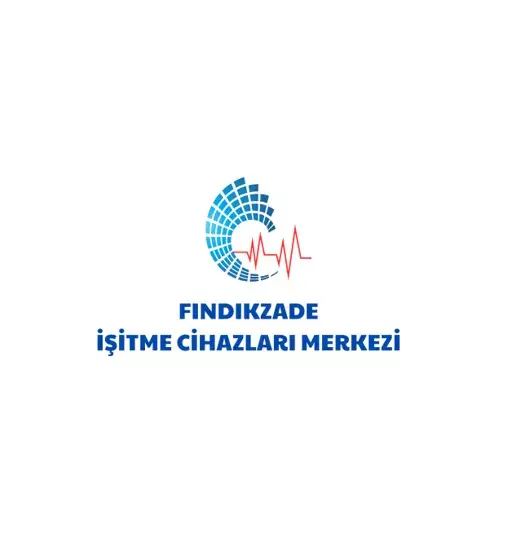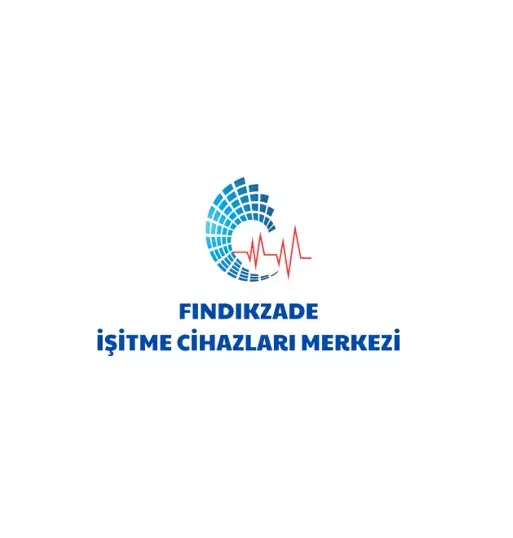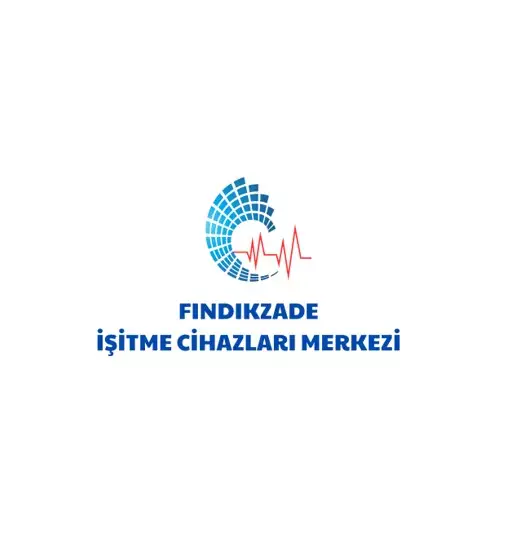Wireless hearing devices in technological choices, it affects how the user's requirements
Jennifer Groth, Brian Dam Pedersen
Wireless technology is very common in our society. However, providing a type and a wireless transmission method. This article summarizes the different wireless technologies wireless hearing aid market in terms of usage in the area, and 2.4 GHz proprietary system that uses technology, ReSound explains the reasoning behind the selection. After extensive market research, the better the needs of the end user of the hearing device technology 2.4 GHz are met. Lip synchronization for continuous transmission and echo effects between these needs and the body without the need for a cable that plugs into the ability to connect with multiple audio source is located. Also, an accessory that plugs into the body of the device without any cable or Dec programmed hearing the needs of the wearer through the design of a system is discussed. Strong connections with external sound sources, and superior sound technology 2.4 GHz wireless ReSound hearing aid, depending on the quality when designing, has been the clear choice.
“Wireless” term electrical forwarders (such as cables) without the use of a team that covers the transmission of information technologies allows for many purposes. Analog hearing aids and FM systems for a long time in the form of T-coils wireless technology has been used. The use of these technologies in certain cases the signal-to-sound ratio may be of benefit to the user by improving greatly. Recently, to exchange information between devices such as the telephone or television, or right and left or to get information from another source, digital hearing devices using wireless transmission has been released. Digital hearing aids with digital wireless transmission provides more possibilities than the one in terms of analog signal processing. In addition, typically digital wireless transmission analog signal-to-noise ratio is improved, and less exposure to interference depending on the specific technology, the possibilities for the privacy and coding is presented. Extend the benefits of wireless digital hearing aids can thus expand existing analog wireless features.
“Digital Wireless” is a term that is also used for many different applications. Changing any one of these technologies is not inherently superior to the other, however, which is valid for all applications, if you yarayacag is one more than the other. In this case, it is especially true for hearing devices. The use of wireless technology in hearing devices in the selection of the ideal, both of the ease of implementation of technology as well as the needs of users, it is important to be taken into consideration. For example, Bluetooth devices such as mobile phones and hearing devices that are convenient to be in communication with many used as a standard in digital wireless technology. Thus, it can be considered to be the best option for Bluetooth hearing aids. However, Bluetooth audio signals to the user, which in many cases does not meet the requirements may cause a delay. Also, according to the requirements of a typical hearing aid batteries, especially for high-power consumption Bluetooth for this app unusable.
Digital hearing aids ReSound Wireless Technology selected for the 2.4 GHz ISM (Industrial, Scientific and medical) frequency band is a proprietary system that works in this article hearing aid hearing device with which the user of the application that causes the wearer analyzing the requirements of practicality and design, this option will be discussed.
Narrowing the options for wireless technologies user options
ReSound Wireless hearing device, both in defining the user requirements as marketrak capabilities in the system, a comprehensive investigation of published studies, both together on Sunday (Groth & Anthonsen, 2010) is based. Wearing a hearing aid hearing aid users and hearing individuals as well as weak, it is thought that they are the professionals of the wearer. Is present on the market for several years because of digital hearing aids with wireless technology, users can observe and examine how they interact with existing products in the future and that it has been able to use it as a way to uncover user needs. Human-Computer Interaction science experts, software developers and a team of specialists in audiology, the device is women who wear their own place in the market by visiting wireless-enabled hearing aids and how they work with customers when using these products, they examined what kind of consulting. The placement of the device and advisory team that supports the systems of the task flow to what extent, and had the capacity to identify any errors that occurred.
For example, the state of a product during donning a net connection it didn't help that has caused it to lose the connection to the notice of installers. When placed in the ears of the other products of the customer installers programming hearing aids had to interpret the blinking lights on the face Dec. A general problem in different systems, programming Dec choosing a face to the editor wasn't open. Considering these issues, many assemblers “wireless” to plug in a cable, it wasn't surprising that you continue to use the hearing devices in Germany, 152 hearing care professional about half of the products that they almost always reported using wireless cable docking provides the opportunity.
Both end user and Assembly in terms of user needs, the needs that emerged from this comprehensive analysis, the most important are listed below. Interestingly, the aforementioned characteristics are the best hearing aids on the market, though, has been so valuable to hearing devices connect to external devices, communication between covering requirements. Some may argue that although the program is important and the convenience of changing the audio installers, installers, especially on the two sides, attached to the wireless communication between the devices is marginal only if it provides for their customers expressed the view that an improvement in hearing. In Germany and in France and in the United States in conjunction with end users and hearing care professionals and focus groups conducted market research in the form of formal studies yielded consistent results: the phone and connect it to a TV to use a wireless connection to obtain better solutions, has been assessed as having the greatest impact on user satisfaction and the most desired for wireless applications, developments covered. ReSound Wireless Technology for the choice of the system mainly depends on how many of the requirements of this priority is met.
Assembler requirements
- Cable, destroy the device connection Dec
- Long-range connectivity
- Robust connection
- Plug and play
- Easy-to-use mounting system
Women who wear hearing aids requirements
- Body-worn device is not needed
- To be able to connect to a television and a mobile phone.
- Long connection range; stable connection
- Excellent sound quality
- Simultaneous voice for television in limited or no delay (I don't have lip sync issues)
- Simple installation and use
- Connection to multiple audio devices; connect multiple users to the same audio source
Difficulties in meeting the requirements
Some of the requirements of this user, NFMI (near field magnetic induction, also known as a wireless technology that is used in many digital hearing aids immediately had to remain unauthorized. NFMI-based technology, while the system is most easily implemented in terms of investment in research and development, this technology does not provide resound for users to solve problems that are very important. Dec simultaneous device hearing aids is not the primary reason for this, it was obvious that is not the centre of the wireless system. NFMI with a timer attached to the body with a neck that is attached to the cable system of the peer Center.
This device receives and transfers the signals from the remote sources through induction them their hearing devices. NFMI is limited to the range of only a few meters; therefore, the synchronization only if the user is very close to the device in case the hearing devices audio sync may occur, and ideally, should be kept close to the magnetic field, which means that the peer should be inserted into the body of a timer that is. Some audio sources commonly used in mobile phones and digital music players in Bluetooth device sent directly to Dec, Dec to transmit to the sound of the sound source device using Bluetooth wireless technology device must be plugged in to a third. A device that plugs into the body of the user based on the necessity NFMI-based technology are met.
It is also clear that Bluetooth is not an ideal solution. Resound's proprietary technology works in the same 2.4 GHz ISM band, although Bluetooth is an open standard for wireless communication. Not only the ES to the timing of the audio signal, can be used for a lot more applications at the same time, Computer Networks, game controllers, and it is used in cases such as electrical measurement of developers. Currently, there are about 12,000 different items using Bluetooth. Bluetooth communication protocols therefore is large enough and flexible enough to fit this many usage areas it is. Therefore, Bluetooth uses more computational resources, and is spending much more power compared to design a custom application such as a hearing aid. Although it had emerged as an important user requirement minimum power consumption, Bluetooth hearing aids in terms of direct application is not useful.
Bluetooth, NFMI-based wireless hearing aid hearing the sound of the system attached to the body of peer timer is used to schedule the ES because the effects on the sound quality of this technology should be taken into account. Es Bluetooth audio to schedule the use of television for viewing, especially in cases where direct sesse are combined with simultaneous voice and causes a delay will not be accepted. Bluetooth simultaneously, which makes the sound-based systems, Bluetooth MP3 player, it can transmit wireless headset or microphone of the device as the sound device, such as a recipient for explaining how to activate Bluetooth A2DP (advanced audio distribution profile) uses a method called. This protocol exceeds the delay of 40 milliseconds, and the audio compression technique that is used, depending on delayed until 125 milliseconds. A sound that can be made concurrent, with the amplified sound through the hearing aid microphones, or in an open system, combined with the sound entering the ear canal if there is a delay of this magnitude can cause lip sync problems and television seydereke even detect the Echo. Delay is too small to be consciously perceived, even though television viewing experience significant negative effects on the mismatch between audio and visual signals (Reeves & Voelker, 1993).
Figure 1 Three wireless device paired to the system a House hearing sound from the system compares the delay in the audio signal. Kemar mannequin with delay the sound from the speakers coming into the ear, wireless transmission, and hearing aids through the arrival of sound that can be heard by comparing measured. The sound from the sound source via Bluetooth, which makes simultaneous NFMI-based systems, which has caused major delays may be disturbing to listeners. Excellent sound quality and the lack of lip sync issues in terms of problems with this technology the user requirements are met.

Figure 1.Two NFMI-based wireless system 2.4 GHz wireless ReSound hearing aid acoustic system and direct the sound associated with simultaneous voice delay. Bluetooth timer from the sound source, which causes large delays inserted into the body uses and Es systems with NFMI System B, resulting in poor audio quality as “low-intensity uses audio compression. ReSound the system high-density maintains the system uses the delay for audio compression and ideal sound quality.
NFMI a recent problem on synchronization and Bluetooth, the sound sources and attached to the body, the ES is a direct link between timer. This means that a married couple's home in the same wireless hearing aid wearer timing devices with the capacity kullanamayacag ES is: a device connected to the phone connected to your television synchronization of two identical two separate timing device is required. Similarly, both in the living room with a TV in both bedrooms timing devices separate the spouse of the hearing aid user will not connect to the same synchronization device, but will carry from room to room. Thus, for the users for connecting to multiple audio devices the user is not sharing requirements and to meet the necessity of connection.
Taken together with NFMI Bluetooth, wireless wireless technology platforms that are defined as properties of the hearing device of the user requirements that would make it acceptable is most disturbing.
Meet the requirements of the hearing aid user
The simplicity of the device without the body
As mentioned earlier, NFMI-based systems attached to the body, the ES is considered to be the center of the system timer, the wireless device. Other devices that connect to televisions or telephones and hearing aids themselves, attached to the body, a peer is connected to the timer. 2.4 GHz technology provides more flexibility in system design that is selected by ReSound. In the product development process, by evaluating the concept of two different hearing aid users, the simplest of which is that it has determined. The first concept, the system is at the center of “personal synchronization unit” used and available NFMI-based systems in a manner similar to a system. The difference is that depending on the device the user a larger range wireless transmission was not to have to wear while in use. This unit features a Bluetooth 2.4 GHz wireless receiver included. Hearing devices as a remote control for mobile phones and other Bluetooth-enabled devices and an interface to a control unit for audio synchronization of the activation function.
The second concept, as seen in Figure 2 hearing aids center was created by the system. With this concept, check all connections and the user only in terms of hearing aids hearing must be prepared to use the wireless features of the device. In a room, and a television in the other room, home stereo system to provide a separate transmission from the use of multiple devices such as a timer, ES, is not regarded as separate solutions, instead, is seen as another link that is used by hearing devices. This is also an easily understood by participants and has become a central concept for most users were preferred over the controller. In addition, this solution offers users comfort and mobility that are not available in other existing approaches. Hearing aid users with their own devices C.Arrow does not connect to devices at the same time, wireless accessories can share with other users. For example, a person visited the home of another user of this system when the wearer of these devices, together with their spouse can be connected to the TV to watch a football game timer.
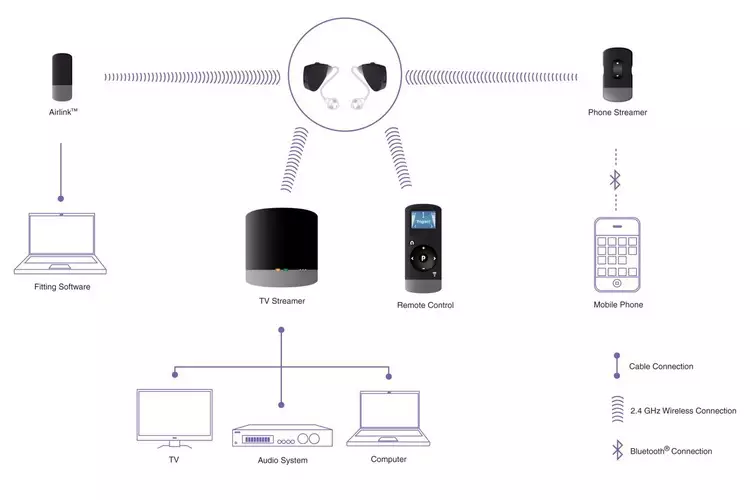
Figure 2. ReSound hearing aid, wireless hearing aid system is what sets the center. Other technologies should create timers es attached to the body center of the system; in this case, are treated as accessories to their hearing devices.
Long range fixed links
ReSound Wireless 2.4 GHz technology, the transmission power of the mobile phone 100 is less than 1%; however, it can connect up to approximately 7 meters. The 2.4 GHz band, since you are in possession of a wireless device that can interact with multiple fixed and formed the focus of the development phase to provide links. ReSound Wireless system divides the 2.4 GHz band, Channel 35. Another device on the same channel in the message as a hearing aid if it is found the necessity of the destruction of the transmitted data packet, and there is a risk of corruption. Therefore, you'll have to secure the transmission of data against such interference or attacks.
ReSound Wireless system for a data packet called, is transmitted in the form of small pieces of digitally encoded. ReSound Wireless transmission that uses two methods to protect against interference in data packets. First time pane. The rules that control operation in the 2.4 GHz band, no more than 0.4 seconds in the given channel device indicates that it should be included in the message. What this means is that even when the channel is free on a lot more congested channels is the emergence of small time gaps. Take advantage of this situation to ReSound, only 160 and 500 micro-seconds (or 0.005 to 0.00016 seconds) sends data packets are very short in length. Due to such a short length of the package have a better chance of dodging.

Figure 3. ReSound, that are running in the 2.4 GHz band in order to avoid conflict with other devices sends data at very small time intervals.
Jump to the second line of defense is called a frequency. This is simply a new data is sent to the track at the time a new channel for the transmission of the channel selected from 35 possible means. The hearing device on the channel to send the next data packet with a mutual wireless accessories deal. Use a strategy different selection on the tape because of all the different devices, always virtually to each other are clear.
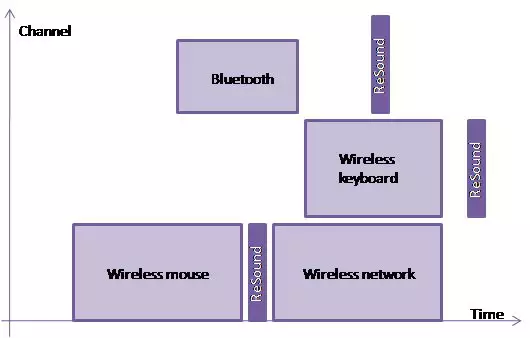
Figure 4. In addition to the very short transmission time intervals (shown on the horizontal axis) technology ReSound 35 different channels to avoid interference from other wireless devices in the 2.4 GHz band makes use of. This graphic associated with the other wireless device is distributed in a transmission type of technology gives an idea about how resound.
Excellent sound quality and I don't have lip sync issues
As discussed, television and other audio sources, from sources such as Bluetooth transmission user in meeting the requirements remain weak. ReSound, sound quality issues associated with A2DP protocol non-voice has designed a proprietary method for transmission. As shown in Figure 1, the delay associated with this method is very short, and this visual and natural sound while providing a listening experience that's completely blocks the audio inputs are not synchronized. Overcoming these problems, in addition to installers for audio synchronization, it is possible to make individual adjustments to the frequency response and the timing of both the ES and the user of the hearing aid audio amplification are a flexible option for setting the tone.
Meeting the requirements of the cutter
The experts of the requirements of the hearing aid to the patient with the process of replacing the wearer principal the principal is concerned. Almost all hearing aid manufacturers, the products of a standard programming although Dec is suitable to faces, installers, nearly twenty years later, still has to deal with the complexities of cable and fittings. The first “wireless” device, the solution was just NOAHlink wireless programming from the computer face up to the industry standard Dec: programming cable, programming, startup, and capsules programming is still required. NFMI-based programming, there are also wireless wireless hearing devices. NOAHlink like, which communicates with the computer via a Bluetooth device is required and the patient is mounted on Dec. The advantage of this coupling attached to the body because of the physical programming of Dec has been removed. A small step in the right direction when customers are required to wear a device that still Dec in terms of being a wireless device, it still does not fully meet the user requirements. NOAHlink is actually such a device with the medallion NFMI stack-based communication includes hook for a deterrent in the induction coil. During the programming of customers you need to hook this around their necks.
A direct connection is a long December and “plug and play”
2.4 GHz ReSound in the solution, in the range of about 3 meters without the portable memory device, the DEC is similar to small USB device that has the capacity to send directly from the hearing device. AirLink USB this device is called. The device once the software installation is done, the assembler only airl plug into a USB port on the computer or other device and the client are not required to wear a hearing aid, this is just “plug and play” to meet the requirement, also from the goals and long transmission range, the connection sogru realizes.
“Plug and play” concept, ease of use in terms of a hypothesis. It is down to the ease of fitting a small device into the USB when the installer of the system must be easily attachable to any device. To achieve this, the transportation of wireless devices and wireless accessories, and additions to the existing software has been included as part of an internal rather than new software. This observation and the analysis and design of tasks that should be executed based on the order of tasks typically performed. Comprehensive tests were conducted at various stages during development and also repetitive. The type of this experiment, users, and devices/examines how to easily use the tools to reach their goals. For example, a cutter device during the placement of the hearing device connects wirelessly to quickly and intuitively understand how, if it fails here, the usability and the functionality must be changed and should be re-tested.
Robust connection
Solid connections establishing and maintaining it in the hearing device assemblers are important in terms of requirements. A traditional programmable hearing aid system, HiPro, or a proprietary interface, such as programming a device attached to the computer by a cable and the cable face Dec data to be sent to 1) and 2 specific hearing will come to your aid at the end of the cable) when it was sent to the same device that has reached all of the data it can be assumed safely. While it may seem clear this situation, the assumption is that the wireless device to the docking station does not apply. The wireless device sends data packets with information about connecting a programming element, you can get and you will get all this data to nearby devices.
Because not all hearing devices will take all the data, it is necessary to filter the imported data. Therefore, all ReSound Wireless products globally unique identifier /or address) are available. This identifier must match the information about the destination of the data packet; otherwise, the packet is rejected because it does not belong to this particular hearing aid.
This address system using wireless connection between the programming device and the hearing aid so that it can be created a special hearing device is the correct address, which will receive data sent to that address. This also active in several clinics AirLinks a hearing aid at the same time enables them to be worn with confidence. This is shown in Figure 5 - A and B in the device package, the device is processed in a hearing.
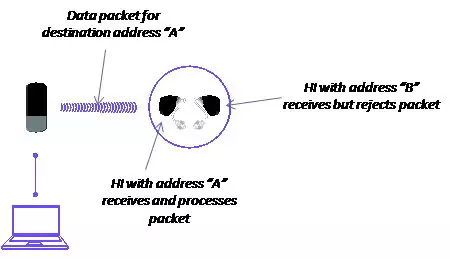
Figure 5. Wireless programming interface, custom hearing aids and hearing devices can communicate with a specific individual at the factory to a unique address in a secure manner through the use of a set of data transfer. Hearing aids them non-exclusive gets data but ignores it.
This creates a new problem: Wireless programming device (AirLink) of the hearing device is aware of how to address that need to communicate? All addresses are unique (if and when it is likely to be more than 4 billion addresses (), a mechanism to discover the devices in the region is required. For this purpose, the address of one of the “discovery” process were selected to be used for. Opening the first 2 minutes of the hearing aid to transfer some data on a globally shared address this, is to simply “if you need me, I can address X” will say. The discovery is started when the device is in the software, wireless programming device to listen to the addresses of the devices to be contacted for this information and thereby will learn. All of the devices shown in the device software is the most common and the assembly of the device as shown in Figure 6, you can choose the suitable one from the right or left ear. When the user selects one or two devices, the custom dialog is initiated.

Figure 6. “Discovery” during the programming device searches for devices and displays them all wireless hearing in December. Cutter left or right ear compared to them in determining the appropriate hearing device to a dedicated connection is established.
Summary
Proprietary 2.4 GHz wireless hearing devices resound-based system, a first in the industry and an impressive selection of technological development. However, it is not technology for technology's sake. Selecting this approach, the priority is a systematic analysis of user needs, how these needs can be met and possible a careful assessment of the consequences of technical solutions is a result of a deep examination. This article describes which user requirements are defined and examined how the design of the system affects the wireless hearing aid them. The main concern for users, best sound quality with strong connections to external resources which can be used for a hearing that it was a simple system that works with 2.4 GHz wireless technology device in order to meet these requirements currently is an ideal solution.







